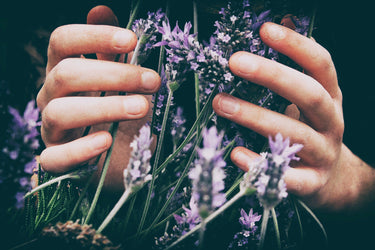
Your garden should be a place of relaxation and calm. A little outdoor retreat to escape the pressures of everyday life. With the pandemic causing more people to experience stress and mental health issues, healing gardens have burst back onto the scene to help combat this.
For those of you who don’t know, healing gardens have been around for centuries. From Japanese zen gardens and Ancient Egyptian palace gardens to hospital and healthcare facility gardens. Plenty of studies has shown the profound effect healing gardens can have on our well-being. For example, some healing gardens have helped war veterans cope with post-traumatic stress and psychiatric patients achieve a sense of calmness. In fact, many hospitals and health care centres are now incorporating green spaces and gardens within their buildings and offering horticultural therapy programs. Research has also found that people recovering from serious illnesses such as cancer or strokes have seen positive effects on their body and mind through a healing garden.
As humans, we are all very deeply connected with nature, so when we actively include nature in our homes, positive changes can happen in the body. Studies have shown that nature can help to lower blood pressure, decrease heart rate, reduce stress and improve your overall mood.
We believe everyone deserves to feel the benefits of a healing garden which is why, using expert tips and advice from Michael Parry aka Mr. Plant Geek and Ellen Mary, we be showing you how you can create a beautiful healing garden in your own home.
Uplifting Sensory Spaces

Surfaces, objects and plants that help to stimulate our senses through touch, sight, scent, taste and hearing can instil a sense of calm within people. Engage and enhance your senses further by turning your sensory area into a fantastic learning zone too. Implement a variety of interesting things to touch, smell and engage with, such as scented plants, a restful seating area, a fruit or vegetable growing space and wildlife-friendly areas.
If you’re looking to create a sensory space in your garden, Mr Plant Geek has said that healing gardens offer a lot of green, natural planting style with layers and lots of different textures. “Calming colours can be brought in such as mauves and whites. Dappled shade is also ideal for creating cosy nooks and you may also want to incorporate moving water for meditative qualities”.
When it comes to including plants in your sensory garden, Ellen Mary suggests moss and Lamb’s Ear for touch as they are soft, velvety and easy to grow. “Sweet pea are also great for an eruption of fragrant cottage garden blooms in the summer and tobacco plant for intoxicatingly sweet fragrance in the evenings. Strawberry trees and Cosmos are bright, cheerful and great for small gardens. Bee balm is fantastic for attracting bees that will buzz around when the flower and society garlic plants offer a delicate garlic flavour without the aftertaste”.
Creating a Meditative Focal Point
 e]
e]
Creating a focal point in your garden for meditation and reflection is key for a relaxing and therapeutic healing garden. Ellen Mary explains the multiple uses of meditative water features. “Water features can be both peaceful and reflective. You could also include a sculpture that not only represents healing to you but is made from materials you love to touch and see”.
Healing gardens are also all about creating a comforting and restorative space, so having a meditative focal point should be one of your main priorities when it comes to creating this type of garden at home. Mr Plant Geek suggests including fragrant plants that rustle peacefully in the breeze or plants with soothing shades of green or with furry, sensory foliage. He also adds, “Sculptures and other artistic structures can also offer shady spots for seating areas, reading nooks and meditative areas”.
“We’d recommend avoiding brightly coloured objects or unnatural garden materials as these can become more of a distraction and take away the intended healing effects of your garden.
Create a Water Space

Having a water feature in your garden can help to evoke feelings of relaxation and contemplation. A water feature can be a great item for a meditative focal point as the sound of water encourages outward thoughts over extroverted feelings.
If you have a larger space to work with, incorporating a pond or waterfall would both look and sound incredible, as well as providing a desirable area for wildlife and unique plant life too. But, your water feature doesn't have to be something overly elaborate to have a positive effect. If you have a smaller space, are on a budget or live in a city apartment. Mr. Plant Geek suggests a simple rock bubbler or solar or battery operated fountains. These are inexpensive items that offer the sound of running water on balconies, terraces or small gardens, giving you the full effect of a tranquil water space.
Ellen Mary recommends pond buckets for small spaces. “It can be extremely satisfying to see wildlife reach your pond even on a balcony high up in an apartment block. Make sure the bucket has stones up to the top and plants all around so wildlife can get in and out again. Add oxygenating plants to keep the water clean and some plants for interest. A water lily can also look stunning.”
Using Green Plants

Healing gardens are boosted by the presence of nature, so a wide variety of plants, flowers and trees will help to lift the spirits and stimulate the senses. Gardening is often a strenuous physical activity that can often be strenuous, it can be classed as a form of exercise, keeping the body healthy. It’s been proven that gardening can help improve your mental health by alleviating stress, lower blood pressure and cholesterol which, in turn, will reduce the risk of heart disease.
For a green, luscious garden all year round, you’ll want to incorporate several evergreen plants such as Buxus and Lonicera Pileata which are low maintenance and will stay green and glossy throughout every season. Peppermint, Chamomile and Aloe Vera are also all green plants that are known to help relieve stress and heal as they can remove harmful chemicals from the air, have anti-anxiety effects, lower frustration and boost alertness.
Medicinal Plants

Although healing gardens don’t literally mean creating gardens with healing plants, lots of modern medicine comes from plants and growing a few common herbs into your healing garden will add a delightful fragrance and form.
Lavender is a natural choice to include in your garden as it has a strong, pleasing scent. It’s also calming, can help aid sleep, and is a very robust plant that both needs very little care and will add a splash of colour to your garden that will come back year after year. Mr Plant Geek recommends rosemary. “It’s a very stimulating plant that can help to boost both your memory and your mood. It’s great for an invigorating tonic too”.
Ellen Mary also recommends incorporating herbs in your garden too such as Oregano which is full of antioxidants, Echinacea which helps stimulate the immune system and Feverfew which treats migraines and arthritis.
Connect with Animals

Creating a garden that will encourage wildlife will give you a stronger connection to the environment and the animals that inhabit it, but it’s also ideal for building a space with healing energy. Choosing plants that attract birds, butterflies, bees and even moths after dark will add a touch of life and brightness to your garden, says The Plant Geek. Plus, you’ll be helping the ecosystem too which will only make you feel good.
According to Ellen Mary it’s amazing how much wildlife can find small spaces too, even in urban areas where there is little else to be seen. “Hang a bird feeder and box, even a bat box and grow some Ivy around it so moths also come. You will soon have an eco haven for city wildlife where you can sit and watch the world go by”.
“Whether you have a garden to play with or a balcony, providing birdhouses or feeders, birdbaths and plants that supply nectar and food such as asters, purple coneflowers, honeysuckle or sunflowers will all help in attracting wildlife. Placing lights in your garden or balcony too will attract moths which many people don’t realise are pollinators and play a very important role in the circle of life”.
Create a Healing Garden on a Budget
Mr Plant Geek tells us that creating a healing garden on a budget is absolutely possible! “You can even create a healing patio by incorporating trees and shrubs in containers, a little bit of shade and plenty of textures and fragrant plants”. .
Solar-powered or battery-operated water features are more affordable than people may think in stores such as The Range, Wayfair and even Etsy. Bird feeders are very easy to pick up in local supermarkets or garden centres too. Creating a relaxing healing garden doesn’t need to cost a fortune and can be easily built up and added to over time.
If you’re a crafty person, why not get creative and make your own decorative features or birdhouses? Not only will this be a fun hobby, you can get your children or partner involved too, but you’ll get to see your creations and remember the good times you had making it whenever you sit outside to enjoy your healing garden.
Ellen Mary adds, “As long as you choose the plants that provoke feelings of calm and relaxation creating a place where you feel safe, able to meditate, take time out and enjoy the magic of nature around you, a healing garden is very achievable in any size space”
Where are the UK’s Healing and Therapy Gardens?


Around the UK there are plenty of lovely healing gardens you can spend some time in. In London, you can visit The Morgan Stanley Garden at Great Ormond Street Hospital which has brought a hugely positive change to the East London neighbourhood. In Guildford, a town in Surrey, you can visit the Normandy Therapy Garden which focuses on generating a positive change for those living with mental health challenges. And in the East of England you can visit the Chapel Garden at Norfolk and Norwich University Hospital which transformed an uninspiring lightwell into a peaceful garden for patients, staff and visitors.
In the South-West, Bournemouth Hospital Charity turned their courtyard into a tranquil, therapeutic garden with a sensory walkway and a lakeside to provide an area of retreat for patients or visitors. In Wales, Bangor Healing Gardens is a sensory garden that provides an accessible, friendly, natural environment for brain injury survivors and usually has plenty of volunteering opportunities to help support the garden. In the Midlands, you can visit Horatios’ Garden, a charity that creates uplifting sensory gardens in NHS spinal injury centres. These gardens have been recognised for improving people’s overall health and wellbeing. With a wonderland of flora and greenery, they also hold rehabilitation activities such as garden therapy, art therapy and music events for everyone to enjoy.
Heading up to the North East, in Newcastle you’ll find the Dilston Physic Garden, a unique garden on the banks of a winding river, with over 700 medicinal plants and a garden of well-being to help calm the mind. In Dundee, Scotland, Ninewells Community Garden is open to all and free to visit. This sensory garden supports wellbeing, therapy and rehabilitation through herbaceous borders, vegetable patches, a small orchard with wildflowers, a picnic area and a wildlife habitat. And, in Argyll anyone is welcome to visit the Tarbert Healing Garden which offers a space for quiet contemplation and encourages people to grow their own food for neighbours in need with plenty of fruit trees and thriving bee colonies too. This healing garden is always looking for volunteers to help in the garden.







